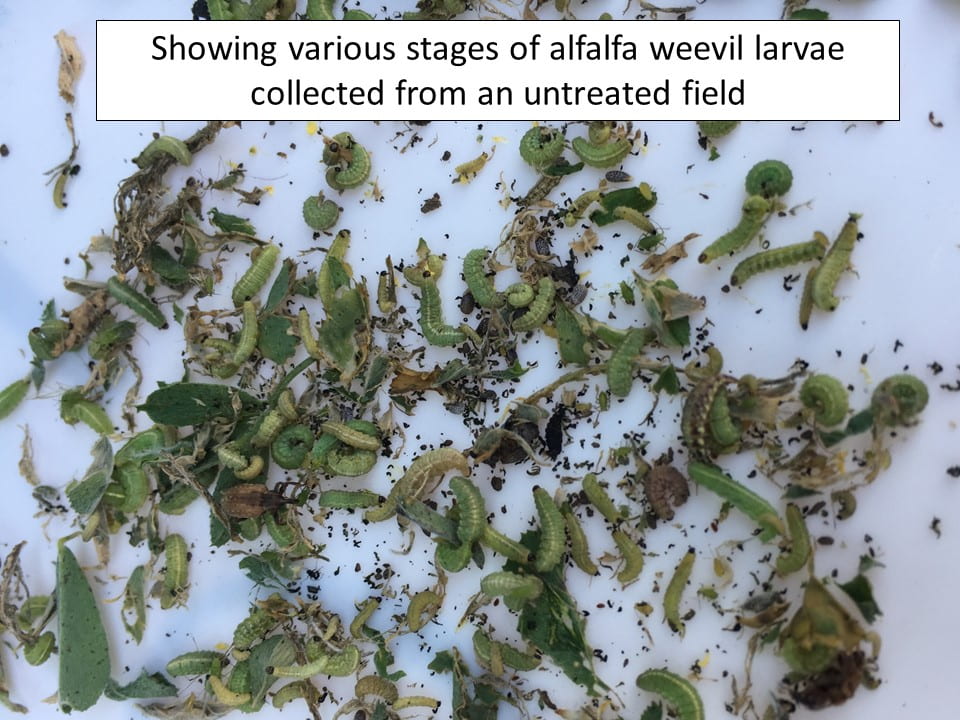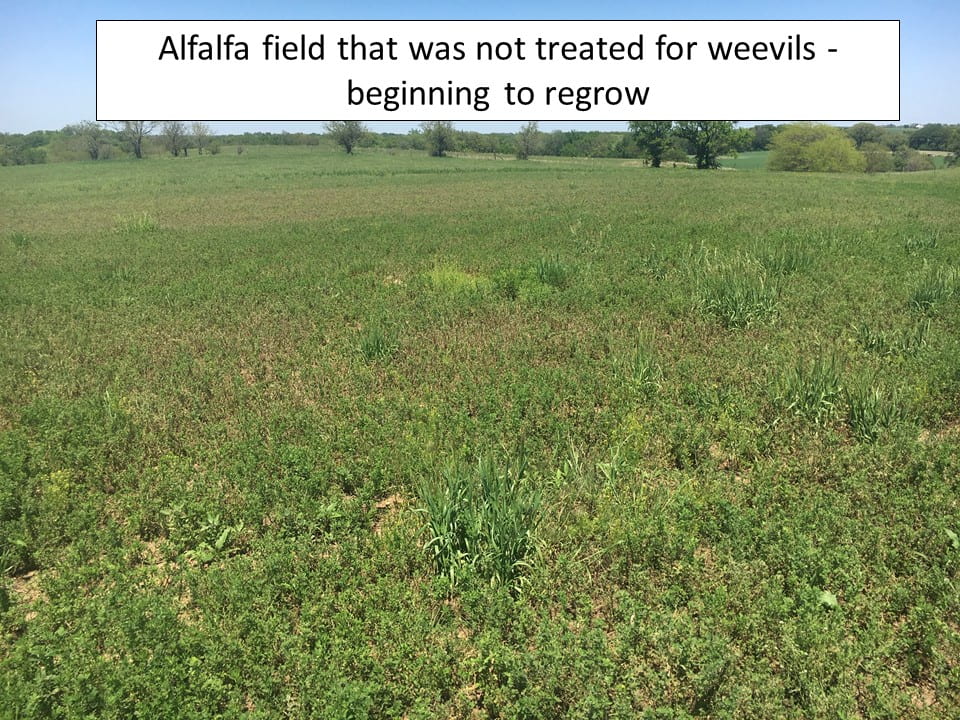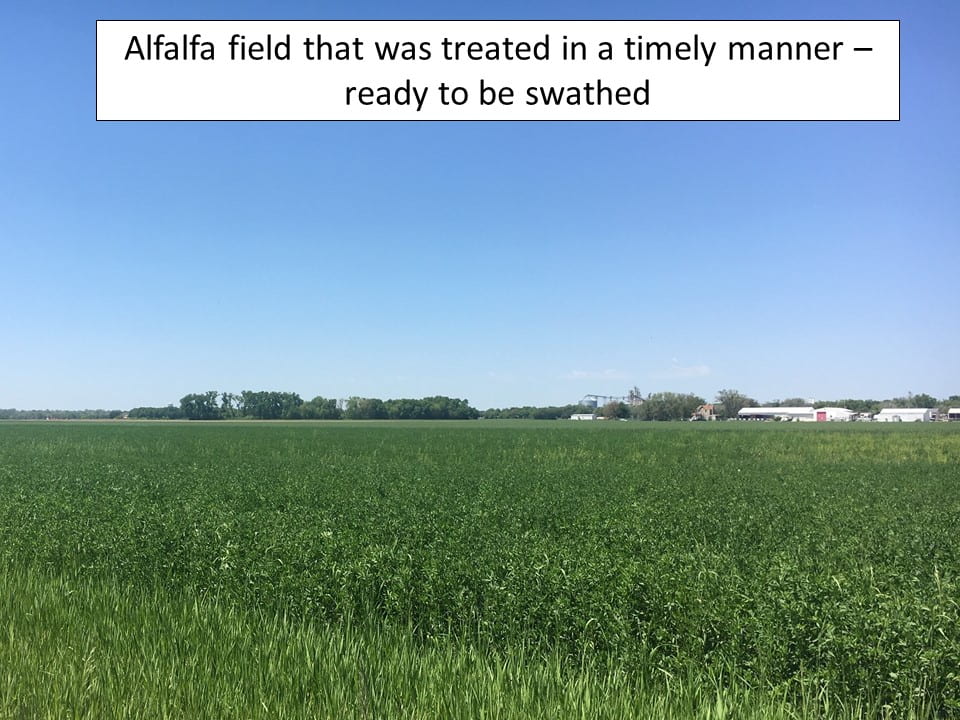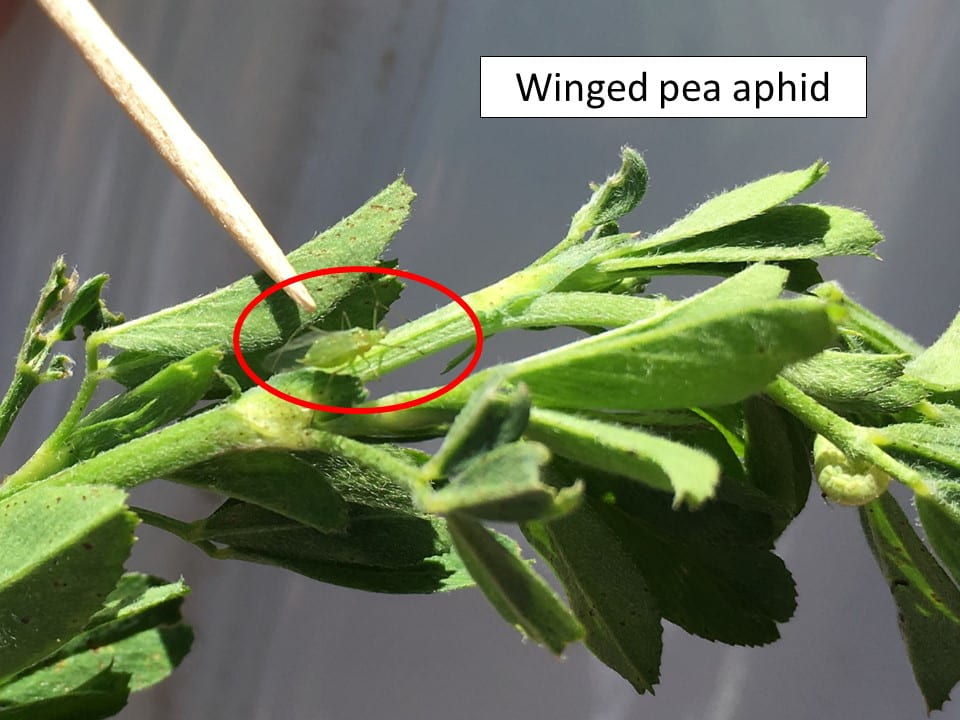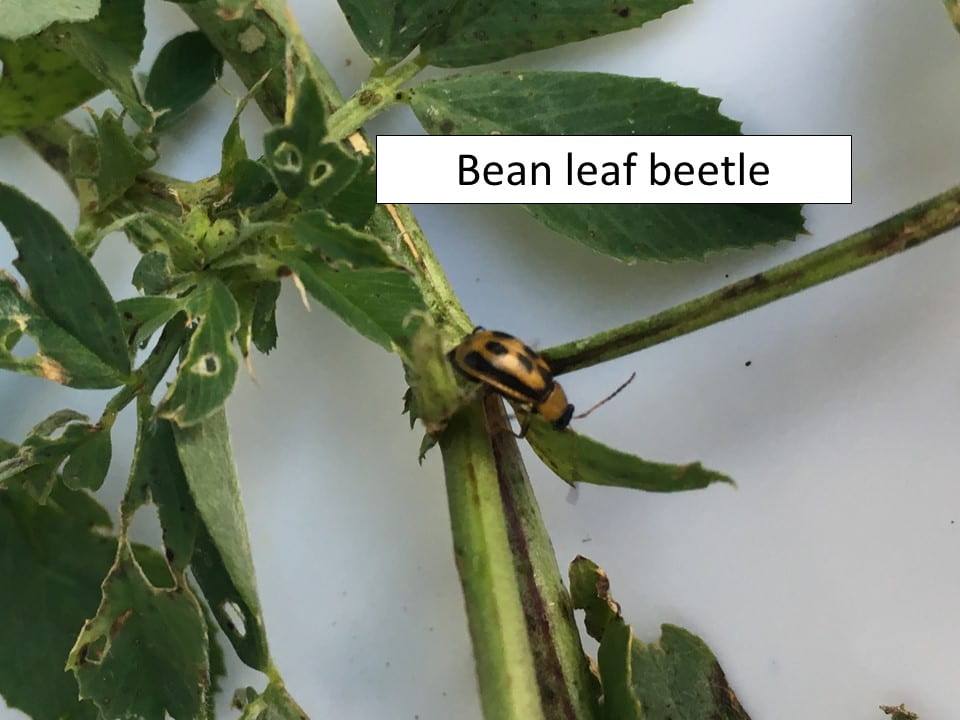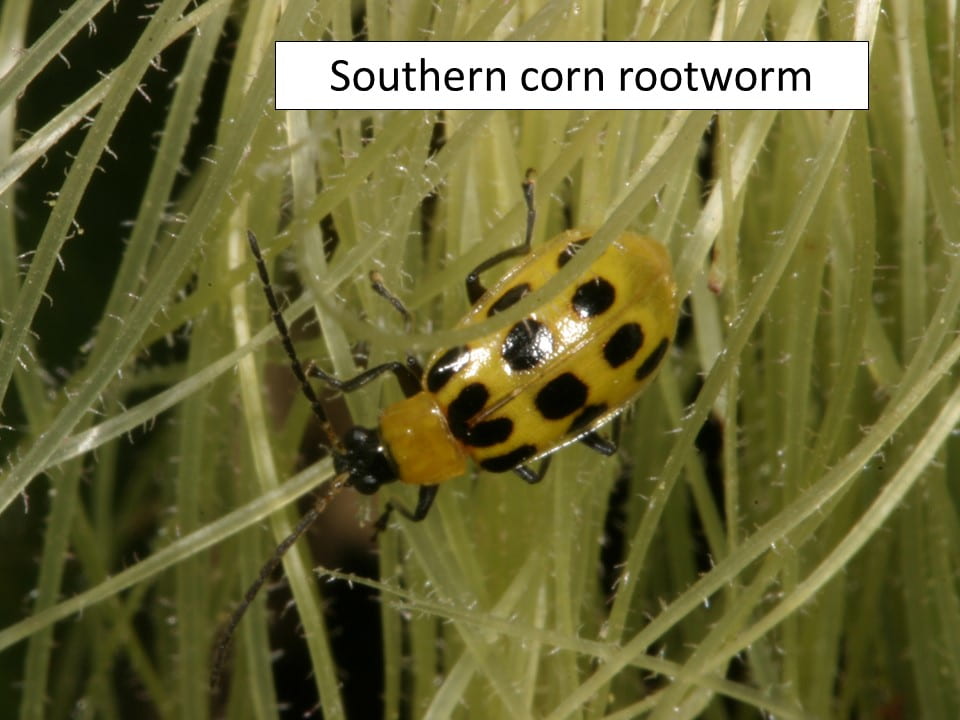— by Dr. Jeff Whitworth and Dr. Holly Davis
Alfalfa weevil activity has slowed considerably but has not stopped yet. Fields that have not been treated at all this season still have relatively large populations of larvae, of all sizes, and increasing numbers of adults.
Small larvae along with later, more mature instars, plus pupae and newly emerging adults are still developing because of the recent cooler weather which has slowed down weevil development. The field shown here withstood a weevil infestation feeding on the leaf tissue since early April but is starting to come back with some regrowth as the larval population matures into pupae, then adults. However, the 1st cutting, at least, has been donated to the alfalfa weevil. In contrast, fields treated in a timely manner are now being, or are ready to be, swathed as soon as possible.
Pea aphid populations are starting to increase in fields treated earlier for alfalfa weevils. However, this is also allowing beneficials to build up which should be helpful for controlling other aphid populations in other crops throughout the growing season.
Another example of alfalfa being a great “sink” for other insects – it is the main habitat for adult bean leaf beetles where they hang out until soybeans start germinating. They will then migrate from alfalfa to feed on seedling soybeans and begin ovipositing around the base of these seedlings.
Bean leaf beetles are often confused with southern corn rootworms which can also be very common in soybeans but do not have the potential to negatively impact yield. For more information on alfalfa pest management and/or soybean pest management, please refer to the KSU Insect Management Guides.
KSU Alfalfa Insect Management Guide: https://www.bookstore.ksre.ksu.edu/pubs/MF809.pdf
KSU Soybean Insect Management Guide: https://www.bookstore.ksre.ksu.edu/pubs/MF743.pdf
